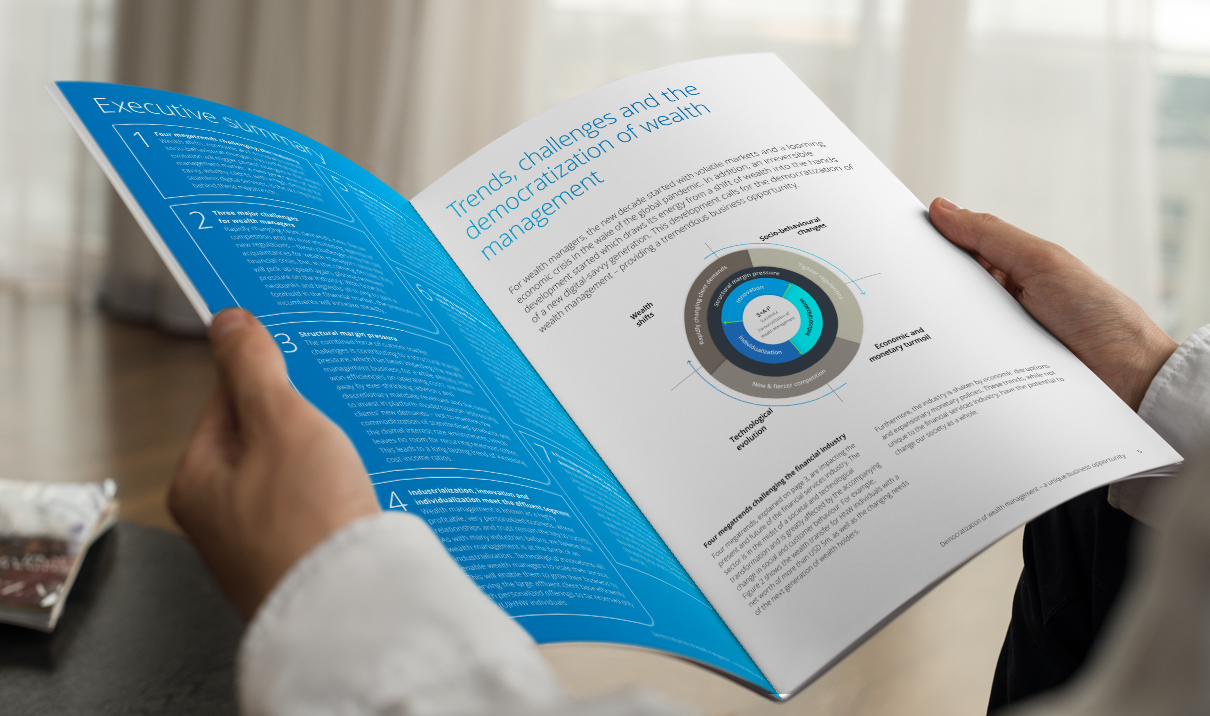Take a closer look at investors’ relationship with their relationship manager in our latest research. Explore what investors look for in an advisor, who so-called ‘Loyals’ and ‘Switchers’ are, and how investors really feel about the use of artificial intelligence in the advisory process.
Avaloq wealth industry survey
The view from the front and investment office
Wealth management professionals are dissatisfied with or indifferent to their technology, according to an online survey conducted by Avaloq in Europe and Asia. Read up on all the findings by downloading Avaloq’s research report now.
Avaloq 2023 investor survey:
The five dimensions of investor behaviour
The report shines a light on the fundamentals of investor behaviour across six markets in Europe and Asia. It is based on original research carried out by Avaloq in 2023.
- Why would investors switch their financial advisor?














































































